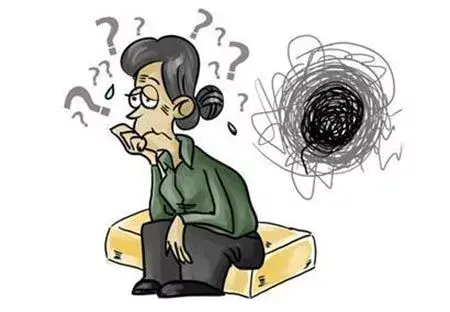
風濕病是一組疾病的總稱,患有這類疾病的病人,心理/精神健康會受影響嗎?不同種類的風濕病患者,他們的精神健康狀況是否一致呢?為了搞清楚這些問題,四川省達州市中心醫院風濕免疫科的吳建紅主任帶領課題組對此展開了研究,發現了風濕病患者心理健康的秘密。2018年9月初,在中國台灣舉行的亞太風濕病聯盟(APLAR)大會上,這項研究作為壁報巡講向亞太各國的風濕病專家們進行了展示。

吳建紅主任在2018 APLAR壁報前
對於慢性病患者,常用一種工具來評價患者的精神健康,這就是醫院焦慮抑鬱量表(Hospital anxiety and depression scale,HADS)。這項研究正是通過HADS得分來衡量患者的精神健康狀況。值得借鑒的是,該研究有其獨特之處:所有風濕病患者的HADS評估結果都來自智能疾病管理系統(SSDM)。在經過醫護人員的培訓後,患者自行使用SSDM移動平台進行HADS評價,隨後評估結果自動同步到醫生的手機端,這些醫生都是經過患者授權的。

SSDM,溝通醫生和患者
吳建紅課題組對SSDM資料庫進行了挖掘,提取了6000多名成年風濕病患者的HADS評價結果。這些患者來自中國251家醫院,涉及25種風濕病,主要包括類風濕關節炎、系統性紅斑狼瘡、乾燥綜合征、強直性脊柱炎、痛風、骨關節炎、混合性結締組織病、多發性肌炎/皮肌炎等。
對這些患者自己進行的近9000次HADS評估進行分析,以11分為界值,發現2類精神/心理問題在風濕病患者中呈高比例:焦慮和抑鬱,而且罹患抑鬱的患者比例明顯高於焦慮。這兩種精神問題有什麼區別呢:焦慮是建立了生活的信心,但擔心病情複發,為怎麼更好地活而不安;而抑鬱是對疾病及生活失去信心,看整個人生都是「灰色」的、無望的,甚至能將人推向拒絕治療、自殘/自殺的路線,走向萬劫不復。
另外,雖同屬風濕病,但不同細分病種給患者帶來的焦慮、抑鬱風險並不一致!

焦慮、抑鬱在各風濕病患者中的患病率:
13%(焦慮)vs 21%(抑鬱)——類風濕關節炎;
16% vs 22% —— 系統性紅斑狼瘡;
17% vs 23% —— 乾燥綜合征;
16% vs 20% —— 強直性脊柱炎;
13% vs 20% —— 痛風;
13% vs 22% —— 骨關節炎;
16% vs 28% —— 混合性結締組織病;
15% vs 28% —— 多發性肌炎/皮肌炎。
風濕病患者往往主要關心自己的身體情況,其實醫生也是如此,在門診中很少會進行焦慮、抑鬱的評估,當然,原因之一是門診時醫生給每個病人的時間通常都只有幾分鐘而已,沒有時間親力親為給病人評估。
然而軀體與精神本是一體,兩者的影響是相互的、雙向的。軀體疾病會給病人帶來焦慮和抑鬱,而這又反過來會加劇疾病。尤其是抑鬱,甚至能將人推向自殺這條路線,走向萬劫不復。
吳建紅課題組給出的焦慮/抑鬱患病率令人觸目驚心,各種風濕病患者都有20%以上的患者處於抑鬱之中,尤其是混合性結締組織病和多發性肌炎/皮肌炎患者,他們中有28%的人抑鬱。給這些患者及時進行心理輔導、合理治療,打斷軀體疾病與精神障礙的循環,將強大患者的精神力量,並讓風濕病得到更好的控制。
摘要
英文
The profile of mental health in rheumatic diseases: A studyof HADS self-assessment with smart system of disease management (SSDM)
Background:A variety of rheumatic diseases can significantly affect the patient"s mentalhealth. Hospital anxiety and depression scale (HADS) is a commonly used tool toassess the mental health in patients with chronic disease.
Objective:To explore the profile of mental health in rheumatic disease.
Methods:After training by health professionals, patients perform HADSassessment with SSDM mobile tools, then the data can be synchronizedautomatically to the mobile terminal of their authorized rheumatologist.
Results:From June 2016 to April 2018, data were extracted onlinefrom the mobile terminals of 6,232 adult patients (1,338 male and 4,894 female)with the mean age of 43.15 ± 16.40 years in 251 hospitals across China. Thereare 25 kinds of rheumatic diseases involved, mainly including RA (32%), SLE (25%),SS (11%), AS (8%), gout (5%), OA (5%), MCTD (4%), PM/DM (3%) and others (8%). Allpatients performed self-assessment of HADS for a total of 8,826 times.
According to the HADS score withthresholds of 11, the prevalence of anxiety anddepression in RA patients was 13% and 21%, and the corresponding prevalence in other rheumaticdisease were 16% and 22% (SLE), 17% and 23% (SS), 16% and 20% (AS), 13% and 20%(gout), 13% and 22% (OA), 16% and 28% (MCTD), 15% and 28% (PM/DM),respectively.
Conclusion:SSDM can be used to self-assess HADS in patients withrheumatic disease. The prevalence levels of anxiety were lower than that of depression inpatients with RA, OA, MCTD and PM/DM.







